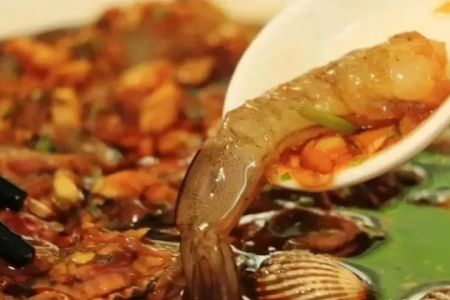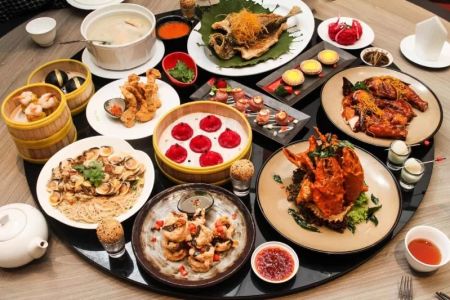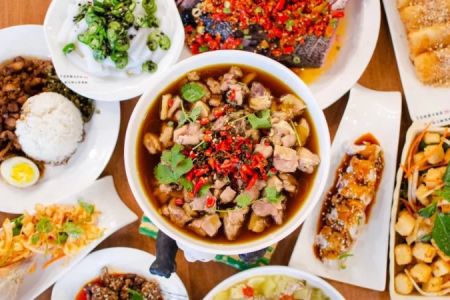- #beyond-crab-rangoon-authentic-chinese-appetizers-that-start-your-meal - 1-overview - creative-appetizers - authentic-flavor
- #key-principles-for-starters - 2-foundations - temperature-texture-balance - small-plates-logic
- #regional-journey - 3-regions - north-east-south-west - signature-starters
- #cold-dishes - 4-cold-plates - liangcai - quick-methods
- #dim-sum-and-steamed - 5-dim-sum - steamed-delicacies - bite-size
- #street-bites - 6-street-snacks - pan-fried-and-griddled - party-friendly
- #modern-twists - 7-modern-twists-with-authentic-flavors - what-works - why-it-works
- #dips-and-condiments - 8-essential-dips-and-condiments - flavor-ratios - pairing-ideas
- #pairings - 9-drinks-and-pairings - tea-beer-cocktails - balance
- #menu-planning - 10-menu-planning-cheatsheet - for-4 - for-crowd
- #shopping - 11-where-to-buy-quality-ingredients-and-finds - curated - trusted
- #faq - 12-faq - authenticity - substitutions - make-ahead
Beyond Crab Rangoon: Authentic Chinese Appetizers That Start Your Meal
Crab Rangoon has charm, but the Chinese table opens with far more nuance and excitement. This guide moves beyond Crab Rangoon into creative, authentic Chinese appetizers that wake the palate, set the tone for the meal, and make guests curious about what’s next. You’ll find practical principles, regional ideas, and chef-level tips you can use at home or in a restaurant playbook.
1. Key principles for starters
1.1 Temperature, texture & balance
Great Chinese starters play with contrast: cool against warm, crisp beside silky, bright acid meeting gentle sweetness. Think chilled smashed cucumbers next to steaming shrimp dumplings; a nibble of numbing Sichuan peppercorn followed by soothing jasmine tea. Aim for variety, not volume—two to four small bites that each deliver a distinct sensation.
1.2 Smart mise en place
Most appetizers hinge on condiments and quick assembly. Prep aromatics (ginger, scallions, garlic) and base sauces (black vinegar, light soy, sesame oil) ahead. Keep blanched greens, poached chicken, or braised beef shank chilled and slice to order. This keeps flavors vivid and textures crisp.
2. A regional journey in small bites
2.1 North: hearty beginnings
Northern tables lean wheat-forward and robust. Hand-torn wheat pancakes with shredded scallions and a swipe of sweet bean paste make tidy bites. Thin-sliced five-spice beef shank, served cold with a ribbon of chili oil and cilantro, brings depth without heaviness.
2.2 East: refined and aromatic
Jiangsu–Zhejiang–Shanghai starters are elegant and slightly sweet. Drunken chicken—poached chicken roulade marinated in Shaoxing wine—slices into neat coins, lovely with goji berries. Vinegared jellyfish (or konjac for a plant-based swap) offers snap and perfume from aged black vinegar.
2.3 South: clean, bright, umami
Cantonese cold plates spotlight clarity: white-cut chicken with ginger–scallion oil, blanched gai lan stems with oyster sauce, or briny cockles tossed with garlic and rice wine. Dim sum favorites (har gow, siu mai) belong here as delicate openers.
2.4 West: bold, tingly, addictive
Sichuan and Chongqing bring “ma–la” electricity. Mouthwatering chicken (kǒu shuǐ jī) layers chili oil, roasted peanuts, and numbing peppercorn over tender poached meat. Garlic-pork slices (suàn ní bái ròu) are cool yet intense, perfect alongside pickled radish.
3. Cold dishes that wake the palate
3.1 Smashed cucumber, the five-minute hero
Lightly smash cucumbers to create craggy edges, then toss with salt to weep moisture. Dress with minced garlic, black vinegar, light soy, a touch of sugar, sesame oil, and a spoon of chili oil. The rough surfaces drink up flavor, and the chill resets the palate between richer bites.
3.2 Silken tofu with century egg
Slice preserved egg over cold silken tofu. Spoon on soy, black vinegar, and ginger–scallion oil. It’s creamy, savory, lightly funky—the Chinese answer to a composed cheese plate, but gentler and cleaner.
4. Dim sum & steamed starters
4.1 Har gow & siu mai, sized for tasting
Keep skins translucent and fillings springy. Serve two pieces per person so guests can sample other plates. A quick dip of light soy plus black vinegar keeps flavors lifted, not salty.
4.2 Chaozhou fun gor, a sleeper hit
These crystal dumplings, often filled with peanuts, chives, and pork, deliver crunchy-soft contrast. A drizzle of chili crisp or hot mustard nudges them modern without losing roots.
5. Street bites for the table
5.1 Sheng jian bao: crisp-bottomed clouds
Pan-fried soup buns arrive with a lacy skirt and sesame-scallion sprinkle. They combine the indulgence people expect from “appetizers” with genuine Shanghai character—no filler needed.
5.2 Jianbing, rolled into party-size portions
Make thin crepes, swipe with fermented bean paste, add crispy crackers, herbs, and a light chili sauce. Roll, chill slightly, and slice into coins. The crunch survives a cocktail hour better than most canapés.
6. Modern twists with authentic flavors
6.1 The chili-crisp moment, used wisely
Chili crisp has become a global pantry star. Use it with restraint: dot over steamed egg custard spoons, whisk into black-vinegar dressings, or finish grilled king oyster mushrooms. Heat, fragrance, and crunch—without drowning the dish.
6.2 Deviled eggs, Chinese pantry edition
Mash yolks with toasted sesame paste, light soy, and a hint of wasabi or mustard. Top with diced century egg and scallion threads. It’s playful, but the flavor map stays authentically Chinese.
6.3 Mapo dip for veggie crudités
Blend soft tofu with a spoon of doubanjiang (broad bean chili paste) and a gloss of chili oil for a warm dip. Serve with blanched snow peas and radish spears for a crowd-friendly starter that whispers Sichuan.
7. Essential dips & condiments
7.1 Black vinegar dipper
For fried or pan-seared bites, mix 2 parts aged black vinegar to 1 part light soy. A pinch of sugar softens the edges; a shaving of fresh ginger adds lift.
7.2 Ginger–scallion oil
Finely mince equal parts ginger and scallion, salt lightly, then pour over hot neutral oil. Spoon over poached chicken, chilled noodles, or tofu. It perfumes a plate without heavy sauce.
7.3 “Red oil” spoon sauce
Stir chili oil with roasted sesame seeds, garlic, a touch of sugar, and black vinegar. This is the backbone of mouthwatering salads and makes instant sense to newcomers.
8. Drinks & pairings that make everything pop
8.1 Tea first
Jasmine with seafood dumplings, Tieguanyin with richer pork bites, and pu’er with chili-hot plates. Tea cleanses and resets, letting you serve bolder flavors up front.
8.2 Light beer & low-ABV cocktails
Crisp lagers flatter fried textures. For cocktails, keep acidity high and sweetness low—think grapefruit, yuzu, or kumquat mixed with soda and a whisper of baijiu or gin.
9. Menu-planning cheatsheet
9.1 For four people (three plates)
1) Smashed cucumbers for freshness; 2) Har gow for delicacy; 3) Sheng jian bao for comfort. You cover cool–delicate–crisp in one sweep.
9.2 For a crowd (five plates)
1) Silken tofu with century egg; 2) Cold five-spice beef shank; 3) Jianbing rolls; 4) Chaozhou fun gor; 5) A leafy blanched green with oyster sauce. Pace the table with alternating hot and cold.
10. Where to buy quality ingredients & finds
Sourcing matters. Look for aged black vinegar from Zhenjiang, first-press soy sauce, and fresh, fragrant Sichuan peppercorns. For curated pantry staples, trusted restaurant recommendations, and service providers who understand regional Chinese cooking, explore Chinese Food—its selections make it easier to stay authentic while still being weeknight-friendly.
11. FAQ
11.1 How do I balance authenticity with accessibility?
Keep techniques and base flavors true (proper blanching, real black vinegar, ginger–scallion oil) while adjusting heat or richness to your guests. Authenticity lives in method and balance more than in bravado.
11.2 Can I make smart substitutions?
Yes. Konjac can mimic jellyfish texture; firm tofu can stand in for chicken in kou shui ji; gluten-free tamari replaces light soy in dressings. The goal is preserving contrast and aromatics.
11.3 What can I prepare ahead?
Roll drunken chicken, braise beef shank, and mix ginger–scallion oil the day before. Smash cucumbers and steam dumplings close to service so textures sing.







